Special to The SunBreak by Heidi Boren
Things have come full circle for me and for Seattle since 1994. That was the year I danced at The Lusty Lady. It was also the April that Kurt Cobain ended his life. Now, The Lusty Lady is shutting its doors this June 27, while the Kurt exhibit draws visitors just across the street at the Seattle Art Museum.
SAM, the reborn Seattle Art Museum on First Avenue, was just a baby back then. Hammering Man had been recently, uh, erected, and The Lusty Lady had the cheek to comment on him from its pink-framed marquee with "Hammer Away, Big Guy." But as pithy as the marquee had always been, the Lusty was still just another sex arcade down at the end of "Flesh" Avenue. A girl who worked at one of these places was probably also a hooker, and most certainly suffered from low self-esteem.
A stripper named Jane, who I met in New Mexico, had challenged those notions for me. When I asked her why she, someone who had a high school diploma, no addictions, and could have worked anywhere else in town, worked as a dancer at a strip club, she told me she didn't want to end up "one of those people from suburbia who thinks Cat Stevens is a real person."
As my musical tastes ran directly to Cat Stevens and Suzanne Vega, I didn't really grasp what she meant. When she died in a motorcycle accident a few months later, however, I decided I wanted to find out.
Having written a single, five-page play that had been well received by my professor in college, I considered myself the premier dramatic voice of my generation. My plan was to get myself back to Seattle where I had a sister who was a soft touch with money. There, I would live out Jane's quest and write an award-winning play about it....
Lake Ann is not a big lake, but what she lacks in size she more than makes up for with her grace and charm. She's also a calming force and an escape of sorts, from the surrounding drama of our main star, Mount Shuksan. When Shuksan is not fogged in it seems to spread itself across the entire sky. When it begins to feel like too much, one can simply turn around. Ann is there.
Fairly popular among day-hikers, you'll see everyone on this trail from hardened mountain lovers to families and even white-haired grannies. That said, it's not exactly an easy hike. At 8.2 miles and 1,900 feet of elevation gain (both round trip), Lake Ann is a bit more of a day hike than I'm usually up for, so, to those grannies who actually get there and back in a day, much respect.
As for my friends and me, we decided to backpack in and stay two nights at the lake so we could do a day-hike to the Lower Curtis Glacier on Mount Shuksan.
We began our hike on Friday afternoon, Labor Day weekend. The sun was shining and the sky was clear. A more perfect day simply could not exist for hiking in the North Cascades, where everywhere you look there are craggy, snow-capped peaks vying for your attention. As we set off on the trail with our heavy packs, we were almost giddy with excitement. Unlike a lot of trails you'll find, this one actually drops in elevation by about 900 feet from the trail head, winding its way through lush forest and eventually landing in a gorgeous little valley where dogs and humans alike may cool off in the many creek crossings. Views of Mount Baker and the surrounding mountains kept us stopping often for photos.
Another crossing and the trail then moves back into the trees, winding its way along the toe of the Shuksan Arm before bottoming out again at a junction where one may choose to go straight for Lake Ann, or turn right for a trail down the Swift Creek Valley to Baker Lake. From this junction, the trail climbs and climbs and climbs. We navigated switchbacks, scree fields, and the seemingly never-ending 1,000-foot slog up an exposed ridge, sucking water like crazy from our CamelBaks....
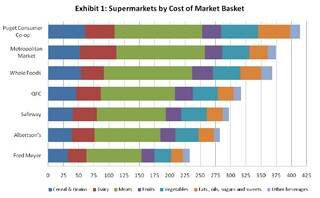 Courtesy University of Washington Center for Public Health Nutrition, "The Supermarket Gap"
Courtesy University of Washington Center for Public Health Nutrition, "The Supermarket Gap"
MSNBC has repackaged the results of the Seattle Obesity Study--by the University of Washington's Adam Drewnowski, who studies relationships between social class and obesity--to make it sound a little sexier, but in a way that also obscures the study's findings.
MSNBC's headline is "Pricey grocery stores attract skinniest shoppers," and the story contains a sidebar that lists grocery stores by customer obesity (a BMI of over 30): just 4 percent of Whole Foods customers are obese, followed by Met Market (8), PCC (12), QFC (17), Fred Meyer (22), Safeway (24), and Albertsons (38).
This is actually the opposite of what study wants to show you, which is that poverty drives the food choices that result in weight gain, not the stores you shop at.
The UW release says simply: "Obesity remains an economic issue." (And there's no photo of a slender blonde loading groceries into her SUV, there's bar graphs.) The study itself is titled, "The Supermarket Gap," and follows up on earlier research that found that "people who lived near supermarkets consumed more fresh produce and were less likely to be obese." Fine, everyone thought, we'll just build more supermarkets in so-called "food deserts" (places served only by convenience stores or fast food)....
It's not that I don't have sympathy with the property owners, public and private, who find someone's been using them as an Etch-A-Sketch. I was outraged to walk into Cal Anderson Park and find the old pump house structure tagged multiple times, and even more disgusted when the city tired of cleaning the concrete, and painted it over with a sickly municipal shade.
But Cornichon, the work of Belltown boulevardier Ronald Holden, is right to lay into the Seattle Times for getting the graffiti story wrong, at the expense of digging into other public eyesores. The attention-grabbing "spending millions every year trying to combat the ubiquitous squiggles, tags, gang symbols" is followed by how long we've been "waging a battle against graffiti."
It's the same problem Tim Burgess had, when he introduced his civility law and associated it with "aggressive panhandling." To people who dislike panhandling, that's all that needs to be said. Forget free speech, civil liberties--clean up the streets! And a quick peek at the comments thread on the Times story shows the same, indiscriminate "string 'em high!" reaction for any and all street art.
It's not that surprising, given the "combat" and "waging a battle" wording. Aux armes, citoyens! Look, the battle against graffiti was lost long ago. Basquiat won. People may or may not personally care for graffiti (or graffiti-style) art, but not everyone loves Henry Moore, either. The only question remaining is how much public space we want to devote to it, rather than have it appropriated by an empowered minority....
When you step onto a Metro bus operated by Nathan Vass, I guarantee you will step off smiling.
For Vass, a smile is all he asks. Vass is a 23-year-old Metro operator, one of the youngest to win the Operator of the Month award in both age and seniority. He's also probably the most interesting young bus driver you will ever meet.
Not a lot of 21st birthday dreams consist of a Metro application, it's safe to say. But Vass had buses on his mind. (Twenty-one is the youngest a Metro operator can be, and his age was the last thing stopping him from fulfilling his dream.) "As a kid, the bus was a symbol of going wherever the hell you wanted to go," he explained.
Vass had a vast knowledge of bus history and information well before he became an operator, and knew Seattle was where he wanted to put that knowledge to use. As the birthplace of on-bus bike racks and wheelchair lifts, Vass said, Seattle is "an amazing system." Compared to what he described as the "grid-like routes of L.A.," Seattle's routes, he said, actually line up with people's travel patterns....
 Moments later, Santa was pulled into the cage and nearly killed.
Moments later, Santa was pulled into the cage and nearly killed.
Ed. note: This story was originally posted last year on Seattlest and I'm bringing it back this year in the hopes it will become a treasured holiday tradition. Rest in peace, smelly cat.
When I looked down and saw the small pool of copper brown gel on the soft white cuff of my Santa uniform, the scent that had been offending me for nearly half an hour was suddenly made very clear. Just to be sure, I brought the sleeve to within an inch of my nose for a little sniff. Yes, there it was--a decidedly potent Preparation H-like substance that must have come from the small, terrified dog I'd met earlier who would have nothing to do with me. As the dog had struggled and pushed away, kicking violently at my ribs with its pointed little feet, it had slimed Santa with its anal gel.
After washing the cuff with soap and warm water, I could still smell the offensive odor. A further examination presented yet another smear of the brown slick mingling among the coarse white hairs of my beard, mere inches from my mouth. Luckily for me, a back-up beard waited in the employee lounge. Does this happen often? I wondered. Clean and newly bearded, I walked back to my post at the front of the store, thinking to myself that however sorry I felt for the little dog and its apparent discomfort, I thoroughly hated the human who'd set its exposed, hemorrhoid gel-covered anus in my arms.
During lulls in the photo-taking, I would occasionally walk outside for fresh air and wave at people at random. I would also wander the aisles of the store, often catching people off guard. I found it amusing to imagine someone suddenly seeing Santa in the corner of their eye, flipping through a book regarding the proper care of ferrets. It was during these expeditions that I made an interesting observation. Often, adult men would give me an accusing look as if to say, "Just who the hell do you think you are?" Women, however, would almost always smile and say, "Hi Santa," thereby proving my theory that all women want to sleep with Santa, which, comforted by this knowledge, is how I made it through two long days dressed as him....
Yesterday morning on my way to the office, I bicycled past a man who was shouting to someone from the sidewalk. "MA MEENY MA MOSEY!" he yelled, repeatedly, spittle flying. His eyes were fixed somewhere in the middle distance, his face was red with rage, and the object of his anger was invisible to me.
Depending on who you are, and the time of day, this is the kind of sight--after Shannon Harps--that usually reminds you that there's a good reason to walk a block out of your way. Stretch the legs.
I have felt that I've been seeing more and more homeless, mentally ill people in the grip of visible psychosis since the recession started, and I called Amnon Shoenfeld, director of the King County Mental Health, Chemical Abuse and Dependency Services Division, to see if this was purely anecdotal or not.
Shoenfeld has been director for the past seven years, and with the County in various capacities for 30. He earned his MSW from the University of Washington, and went to work for King County as a crisis outreach and involuntary commitment specialist in 1979.
There are about 27,000 people who rely (voluntarily or not) on King County's mental health services, and another 12,000 who are involved in substance abuse services. This number hasn't varied much recently, Shoenfeld said, but recent budget cuts at the state level have reduced funding by $7 million for mental health, and $3 million for substance abuse.
Funding cuts are about to worsen: Governor Gregoire has just released a doomsday balanced budget that would eliminate the Basic Health Plan and GAU (assistance for people unemployable because of mental or physical disabilities), slash financial aid for college students, and suspend "all-day" kindergarten and support for poorer school districts.
The Seattle Times notes that, "Most of the state budget is off-limits to cuts because it's either protected by the state constitution (such as funding for basic education) or by other requirements (such as the state's share of Medicaid, a federal-state insurance program for the poor.)"
"If I could say anything right now, I'd just say: Please don't cut us any more," Shoenfeld said near the end of our conversation.
I had asked him, looking for a bright spot, if extra funding was somehow found, where he would like it to go. But Shoenfeld, beleaguered, thinking of his case managers with up to 70 clients, couldn't go there at first.
Despite the fact that much of the mental health and substance abuse "bill" is associated with Medicaid, with the federal government footing as much as 60 percent, the state is perversely focused on what it is permitted to cut, rather than the overall cost-effectiveness of combined federal and state dollars.
"We had to cut back on outreach to kids--mainly street kids--who are abusing substances." As in so many cases, prevention is the cheapest option, Shoenfeld explained, but it seems less critical to the budget-cutting eye.
"We've had to cut back on the number of people who can get into outpatient treatment, both adults and kids. In King County, we have to use all our 'non-Medicaid dollars' to cover crisis services and involuntary commitment services, our evaluation-and-treatment programs, our residential programs," said Shoenfeld.
Now he's expecting proposed cuts of over $1 million in those core crisis services, which for the general public, is related to the sense of insecurity you feel at noticing more people ranting and raving, and behaving unpredictably....
November is a strange time to visit our large cousin to the north. It's cold, but there's very little snow. Every new day loses another five minutes of daylight from the previous. The whales have gone south. The bears have had their fill of salmon and are working on making their dens nice and cozy for the winter slumber. You can count the number of actual vacationers on one hand. Most of the out-of-towners appear to be there on business, as was the case with my wife. I tagged along because I can't pass up an opportunity to go to Alaska no matter what time of year it is.
We spent our first few days in downtown Anchorage without a vehicle. We stayed at a bed and breakfast called the Copper Whale at the West end and spent most of our time walking the streets, ducking into shops, boutiques, cafes, and brewpubs. There was a lot of bundling up, covering the ears, neck, and hands, only to shed it all again minutes later.
The high temperature during our stay was 35 degrees, though at times it was much colder than that. Still, I felt kind of silly, wrapped up as I was inside my snowboarding parka while hardened locals strolled by in little more than a flannel shirt. I told my wife I was glad it was so cold. "It makes the trip seem more exotic," I said. Luckily for us, the sky was clear, even sunny, so we were able to keep an eye on the surrounding mountains to be sure they were not misbehaving.
If you visit Anchorage, I recommend you not leave until you've consumed the following: the Crabby Omelet from Snow City Cafe, the Big Orso Burger from Orso, beers from Glacier Brewhouse and Snow Goose Restaurant and Brewery, and trivia night at Humpy's Great Alaskan Alehouse.
After a few days in Anchorage it was time to drive south to the Kenai Peninsula in a rented mid-size SUV. This is a breathtaking drive. First one must drive around the Turnagain Arm, a large inlet ringed by snow-capped peaks which seem to launch straight up from the icy water. The highway then ducks into the mountains and snakes its way through the gorgeous Chugach National Forest. The road then nuzzles the turquoise glacial waters of Kenai Lake and the Kenai River before eventually straightening out into a more even landscape dotted by marshes and small lakes.
Moose love Kenai. I don't think a day passed without seeing one of these huge, goofy-looking things in someone's lawn, on the side of the road, or, as was the case once, crossing the road right in front of me. I'm happy to report that the brakes worked wonderfully in my rented Toyota.
Located at the south end of the peninsula is the beautiful town of Homer. If you believe the bumper stickers popular in the area, Homer is "a quaint little drinking village with a fishing problem." If you ever get the chance to visit the area, you must visit Homer. It is stunning. And it has a spit.
As my wife was busy working for two days, that left me with a vehicle, some magnificent country, and ample time for exploration.
I drove around the first day, somewhat aimlessly, without an agenda or a destination in mind. I took photos, watched the sun rise over the Kasilof River, visited an old Orthodox Russion Church in the town of Kenai, and then drove around some more. Feeling like I must be missing something, I decided that my second day of solo exploration needed to be a little more organized....
"I can't imagine not doing it. I can imagine not doing it, but you might as well dig a hole and put me in it." -- Dave Niehaus, 2008.
I heard the old-fashioned way, from the disbelieving exclamation of a downtown bartender. "Didja hear? Dave Niehaus died." See, I had my pupils dilated this afternoon, and I hadn't been able to read the several text messages from longtime friends telling me that Hall-of-Famer Niehaus, the Mariners' radio and TV voice since the franchise's first pitch 34 summers ago, was gone.
Niehaus in 1982
Tens of thousands of us grew up with Niehaus' voice, an annual feature of Seattle life as steady and predictable as October rain. Niehaus' baritone resonated though my childhood--under my blanket, as I defied my parents' orders to go to bed. His voice was part of my teenage years--in beater cars, as my friends and I drove around town. It filled my young adulthood--through Manhattan pay phone receivers, when I'd call 1-800-MY-MARINERS to hear game highlights. And the sound was still there my early 30s--I'd pull a radio out onto my porch, turn on Niehaus, and listen to that voice for what I knew, at his age, might be the last time. I made a point to do so during this season's last game. Macabre, I know. Glad I did.
Seemed appropriate to hear about Niehaus' death at a bar, since when he started his career, that's how sports news spread. Born in Depression-era Indiana, Niehaus lived through four media revolutions, from radio to television to cable to the Internet. And because of those revolutions, no sports media figure in this town will ever have Niehaus' influence.
For most of Niehaus' career, Mariner fans saw our team through his eyes--literally, as so few games were televised. The Mariners' first season, 1977, only 17 of 162 games were on TV. As late as 1994, only 71 games were scheduled for TV broadcasts. Now, we watch the games on TV at the gym with the sound down, or spy the internet gamecast, or follow the score on our phones. Then, Niehaus was often our only live link to the team....

Firefighter G.F. Sevilles visiting classroom at Halloween, 1966: Item 75723, Seattle Fire Department Slides (Record Series 2801-09), Seattle Municipal Archives
I felt the need to respond to MvB's post about Seattle Schools because I'm no longer "outside looking in" with our school system. I'm a parent now, having endured the process of school selection and the ups and downs of kindergarten.
As an actual SPS parent...I find it amazing any kid gets taught anything at all.
Large school systems are caught in a bind because they have to educate all kids. And educating all kids is the morally correct thing to do. But this leads to what I think are unfair comparisons.
Comparing a charter school to a regular public school is like comparing a boutique to a big box store. Of course the boutique is going to have more of what you want. But it's also going to lack a lot of things you may need because of how specialized it is. And that's been the case with charter schools--when some kid outside their specialization pops up, say a kid with undiagnosed dyslexia, they have nothing to offer for support, but you know, the school district does.
I ran into that shopping for a school last year. I went to what I thought was a fine parochial school, great test scores, diverse, solid teaching...but I mentioned my daughter is showing early signs of ADHD, and it was suddenly: "We can't help you with that; you're on your own." If you're outside of the norm, you're on your own.
Now, it's not that much better with Seattle Public Schools, an organization whose communication style can be best described as "written by unicorns, implemented by Sasquatches, and chaired by the Snuffleupagus." That is, if it exists, I haven't seen it. And I've heard stories of people going to the mat repeatedly with the district just to get help mandated under ADA and the Rehab Act. I've heard stories of parents fighting to get their kids 504 plans written and parents fighting to have the 504s removed from their kids files. On the other hand, at least they have something to fight.
And that's the worrisome part to me about these charter school reformers--they're more than willing to yank their "special snowflakes" out of the public schools, but everyone else's "special snowflakes" with any issues get drop-kicked back into a school system that's now choc-a-bloc with discipline problems, learning disabilities, and kids that cost more to educate than the per capita rate....
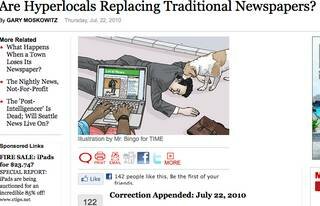 Every time I read a story like TIME's "Are Hyperlocals Replacing Traditional Newspapers?", my first reaction is generally a little thrill of recognition at seeing Tracy Record's name.
Every time I read a story like TIME's "Are Hyperlocals Replacing Traditional Newspapers?", my first reaction is generally a little thrill of recognition at seeing Tracy Record's name.
Seattle's hyperlocal scene (and social media mavenry for that matter) is the envy of the nation, and West Seattle Blog, as a more-than-full-time, news-breaking enterprise is the stuff of future HBR case studies. A six-figure revenue stream in the placeblog space? 750,000 page views per month?
But on the other hand--as Record would be the first to tell you--this is a dog bites man story. Listen to TIME characterize hyperlocal content: "Hyperlocal sites also frequently publish upbeat accounts of parades and high school sports, as well as information on which local vendors sell the best produce. Recent headlines on Record's site noted a 'mega-low' tide and an upcoming garden tour."
What does that sound like? TIME sums it up for you: "Record sits in her living room reinventing the role of an old-school newspaper editor." Reinventing may be stretching it: Record is swimming with the online current, rather than against it, but she's a journalist-editor in the mold of many newshounds who came before her.
 West Seattle Blog is a local newspaper that's not printed on newspaper, but otherwise, what's different is a question of degree, rather than kind. It's supported by local advertisers: insurance and real estate agents, yoga and massage practitioners, car repair shops and dog-walkers (thanks to "Sales Guy," co-publisher, and husband, Patrick Sand). Its online presence makes community-driven (and -supplied) stories that much easier, but news tips are not new. The WSB forum fills in for classifieds, and augments reader contributions.
West Seattle Blog is a local newspaper that's not printed on newspaper, but otherwise, what's different is a question of degree, rather than kind. It's supported by local advertisers: insurance and real estate agents, yoga and massage practitioners, car repair shops and dog-walkers (thanks to "Sales Guy," co-publisher, and husband, Patrick Sand). Its online presence makes community-driven (and -supplied) stories that much easier, but news tips are not new. The WSB forum fills in for classifieds, and augments reader contributions.
Record is fond of reminding people that a blog is just a delivery system. It would be a huge mistake to focus solely on the platform, and overlook the veteran, up-all-night journalist who knocks out stories on the hour. Coming from broadcast journalism, Record seems to have had zero fetishistic attachment to ink-smudged sheets; if there's media (video, audio, social) she hasn't leveraged in her quest to connect readers with WSB, please drop her a line, she'd love to hear about it....
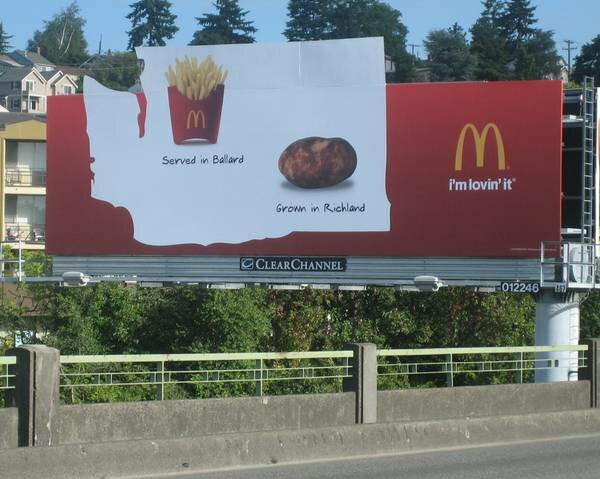 Photo courtesy of Gilman Park blog.
Photo courtesy of Gilman Park blog.
Coincidentally, I happen to be reading Mark Bittman's screed against agribusiness, junk food, and fast food, Food Matters, just as McDonald's "localwashing" ad campaign splashes across Seattle billboards. Gilman Park blog apparently broke the story on July 18, and it is now spreading across the internet. See Grist.com, Change.org, Fast Company, and Web Design Cool for various takes on the fast food giant's blatant and insulting attempt to hitch a ride on the locavore wagon.
The irony of the campaign is that a marketplace such as Seattle, with strong farmers markets, restaurants committed to sourcing locally, and an educated, informed populace, is not likely to respond well. That doesn't really matter. McDonald's has a marketing budget of over a billion dollars, the bulk of which (over $800 million, as of 2006) is spent on U.S. media. That's about 16 percent of gross sales, paid for with every Big Mac, fries, and shake. Test marketing an ad campaign that will be about as successful as their pizza trial a few years ago is just a part of the equation.
What will be significant is the how much media attention the campaign gets, whether the campaign becomes a "teaching moment" for consumers in other markets, and whether other communities heed the warning: Localwashing appears to be the next frontier for advertising. It's certainly easier and cheaper than actually sourcing and using local, sustainable, and organic ingredients. Very, very low hanging fruit for McDonald's, in fact, since the company is the single largest purchaser of beef, pork, potatoes, and apples in the U.S....
Posted on behalf of Mike Gillis, Board member of Seattle Atheists. "Everybody Draw Mohammed Day" was an idea conceived by Seattle cartoonist Molly Norris who jokingly floated the idea in reaction to South Park's debacle with portraying Mohammed in an episode of the animated series.
I support "Everybody Draw Mohammed Day." Why? Because I support free speech. Even speech I don't like. Especially speech I don't like.
Just the same way I'd support "Everybody Eat a Hamburger Day," if it were Hindus using threats of violence against people who ate beef.
In a free society, free speech means having the right to say exactly what someone doesn't want to hear. If you don't like what someone has to say, you need to answer with your own free speech. Violence and the threat of it is not free speech. It is the admission that you have a losing argument in favor of your position. Nothing justifies violence to chill free speech, not one having their religious sensibilities offended. Nothing.
If some religious person drew an offensive cartoon or wrote an offensive op-ed about atheists, it would be insane and morally reprehensible for me to kill the person who wrote or drew it. It would be wrong for me to cut off their head, shoot them eight times and stab them through the heart. It would be wrong for me to set embassies on fire and beat people up.
It would be wrong for me to chant for their deaths and call upon other atheists to kill them for being offensive. It would be wrong for me to imply a death threat to the writer or cartoonist and then post pictures of the above beheaded murder victim on my website. It would be wrong for me to break into the writer or cartoonist's house with an axe and try to kill them in front of their grandchild. Ever. No matter how much I was offended. No matter how bad the cartoons or op-ed was....
Photo credit: Ryan Hawk/Woodland Park Zoo
Those penguin chicks better watch out, because the kids are coming up from behind. Over the weekend, a baby pudu was born at the Woodland Park Zoo. I've never even heard of a pudu, but I'm sure it's come up in a crossword puzzle a time or two, as it's the smallest deer species in the world.
The pudu is native to South America, and grows to be 14-18 inches high (at the shoulder), weighing anywhere from 14-30 pounds. The tiny deer inhabits temperate rainforests, living in "dense underbrush and bamboo thickets" to avoid predators, like owls, pumas, foxes, and feral dogs. Of course, the biggest threat to the endangered pudu is man, with the pudu's natural habitat disappearing to development, agriculture, logging, and other human activities.
And while the baby penguins are still under wraps, the parents and baby pudu are on view in an exhibit adjacent to the flamingos. The new baby is the sixth offspring of a twelve-year-old mother and ten-year-old father pudu. (Check out this video for footage of a day-old pudu born at the zoo two years ago.) No word yet on the fawn's sex or potential name, but tomorrow marks a neonatal exam and weigh-in for the newborn, which means more pudu photos and video to come.
Bing's Streetside view captures the scaffolded look of The McGuire
Yesterday, the news broke that a 25-story high-rise in Belltown, The McGuire, would be torn down just nine years after construction, due to "defects." The $31-million apartment tower, at 210 Wall Street, had been clad in scaffolding for months, as the owners tried to deal with cracking and spalling of the concrete exterior, due to problems with reinforcement placement in the building’s frame.
Further investigation revealed that post-tensioned slabs--widely used in high-rises to help support and strengthen the concrete, and allow for thinner floors--contained cables that were corroding. (After it opened, The McGuire fairly quickly had troubles with water entering the building's envelope, and then the wrong paint and grout had been used to protect the cables from water, as well.) The City of Seattle Department of Planning and Development told the owners to repair it or vacate by the end of 2010.
Given the costs of repair, the Carpenters Union Local 131 and MEPT, the Multi-Employer Property Trust, gave hundreds of residents notice to vacate. (The McGuire's original developers were the Carpenters Union Local 131 and Harbor Properties.) Ronald Holden, Belltown's eyes and ears, reports on his blog Cornichon that residents are being offered substantial incentives to quit the building by May 15.
Legal advisers Kennedy Associates said the owners were suing the general contractor and architects. Emporis.com and the city's permits confirm that the general contractor on the project was the national firm McCarthy Building Companies, Inc., one of the top ten commercial builders in the U.S. Here is their differentiator:
Because we are true builders, owners get more and better options. Faster and safer execution. And a clear cost/benefit solution that yields the best final cost, every time.
Structural engineers were ABKJ, who also worked on Harbor Steps and Belltown's Arbor Place. Architecture firm Hewitt has a long list of Seattle projects, from Harbor Steps and Belltown's The Klee lofts and suites, to the Capitol Hill light rail station and University Village. Most recently, they are working on Belltown's Third & Cedar project, a 17-story tower with about 200 units, funded by HB Capital....
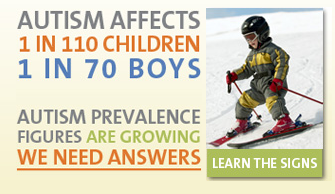 From the Autism Speaks website
From the Autism Speaks website
Sallie Tisdale has an article in Harper's (subscribers only) this month about her autistic daughter. There's an element of forestalled explanation to it; yes, she said "daughter."
My daughter, Annie, still lives with us. She is twenty-six now and at the moment is sitting on the porch, looking out at the street. Soon she will come in and pace for a while, her head down. Later she will read the first few pages of a book—the same book, the same pages, that she read last week and the week before, and will read again tomorrow.
"Autistic son" delivers 175,000 results on Google. "Autistic daughter," just 31,000. People are not sure why more boys than girls are found to have autism. Epidemiologically, the ratio is supposed to be about 3.6 boys to one girl.
It's known that girls can learn to mask some of the effects of autism more easily than boys, so it's possible that they are under-diagnosed in general. Studies show that hallmarks like "language deficits, tantrums, and aggression are all less common in girls than boys in the general population." A British researcher raises the specter of a shadow population of "shy" girls who like to keep lists and count calories (even to anorexia).
Tisdale's story is a primer on autism's variability, and its effects on everyone who struggles with it, including caregivers. Tisdale recounts the lifelong challenge of it: the official optimism with which her daughter was handed off as she finished school, the time her daughter started hallucinating and had to be given antipsychotic medication. Writes Tisdale:
Long-term studies of people with autism are not reassuring. Autistic adults generally read poorly, have few math skills. Very few go to college, are employed, or lead independent lives. The majority say they have no friends....
(more)
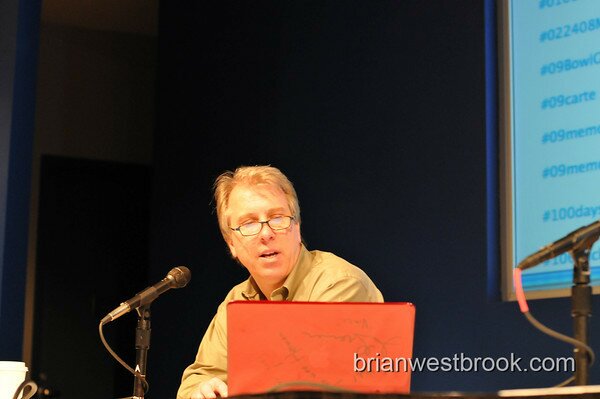 Steve Broback of the Parnassus Group, at 140TC: Seattle. Photo by Brian Westbrook.
Steve Broback of the Parnassus Group, at 140TC: Seattle. Photo by Brian Westbrook.
This was Monday early afternoon, and Sagolla and I were making up for not having been able to connect face-to-face earlier in the day, while I was down at the Bell Harbor Conference Center at Pier 66 for 140: The Twitter Conference, a commerce-meets-culture confab digging into nitty-gritty of how to maximize whatever benefit you're trying to get from your 140-characters-at-a-time online presence.
While the audience was decidedly business-y, and most of the presentations oriented towards marketing and branding opportunities via Twitter, the subjects of politics, pop culture, philanthropy, and privacy kept popping up. On the last subject in that list, Ben Parr of Mashable pretty much summed up the prevailing philosophy when he explained: "Privacy is dead." So there's that....
"'Seattle--you got a lot of liberals there,'" Jonathan Raban says the man checking him in for the Nashville Tea Party Convention said. "I accepted his condolences."
Raban's Tea Party piece in The New York Review of Books is delightful reading not just for the chutzpah employed in sending an Englishman to a Tea Party, but also because Raban resists the urge to add one wingnut lump or two: his Tea Party survey explores the way all sorts of people with inflamed passions have gathered together, only to discover that the hobbyhorses that brought them don't necessarily like the close quarters.
For Raban, author of Surveillance, a libertarian lean against government intrusion into private life was calling card enough that he could chat sociably with the gamut of Tea Partyers he met: the ones who vacationed in Amalfi and Tuscany, the ones with the second home in Torquay, the red-headed, sixtyish Virginian with two special-needs adopted daughters.
Only one man went public, even in a presumably "friendly" crowd, with overt racism. A table of Tea Partyers was recounting the public's hoodwinking by the Obama campaign.
Obama was an unknown quantity when he was elected. He had no record, no experience; he was an empty suit about whom we knew nothing.
"Well," said the alpha male, producing his ace of trumps, "we knew he was black."
Later, one of Raban's fellow conventioneers would tell him that "being here has made me realize that I am a liberal conservative."
After all the invective heaped on Tea Party heads--and the attention focused on those mugging for TV coverage--it's a relief to have at least one reporter not succumb to the temptation to caricature poorly, but to do it with Rabelaisian naturalism and zest. Diminishment is what creates a Tea Party in the first place.
 The rusting husk of Gasworks Park, a fitting metaphor for our elected government. Photo by our Flickr pool contributor feekner.
The rusting husk of Gasworks Park, a fitting metaphor for our elected government. Photo by our Flickr pool contributor feekner.
Late last month, I wrote about Oregon's special vote for Measures 66 and 67, two bills passed by the legislature and signed by the governor that were sent to the voters as a referendum, which raised taxes to help close a budget shortfall. One raised the minimum corporate tax for the first time since 1931, while the other was a modest increase in the income tax for high-earners (Oregon has an income tax but no sales tax). Both measures passed with substantial margins, with roughly 54 percent in favor to 46 percent opposed.
The vote was closely watched nationally because Oregon, like Washington, is a state known for its anti-tax fervor. Oregon had its own Tim Eyman, has caps on property tax increases, and has repeatedly rejected new tax increases. But faced with dramatic cuts to crucial services, Oregon voters banded together with their elected representatives and passed two very simple measures that kept the state working.
Our fearless leaders in Olympia, on the other hand, have done virtually nothing. While Gregoire has stated she wants to "buy back" some of the slash-and-burn budget cuts she originally proposed (as a matter of state law, which requires her to present a balanced budget--from the beginning, she made clear she did not support that budget), her alternate budget still relies extensively on cuts, with a large portion of new revenue expected from federal stimulus money. The House has introduced a bill (HB 3176) that would generate $210 million in new tax revenues by mostly closing loopholes, but that's a pittance compared to the overall $2.6 billion shortfall over the biennium....
 Trees at risk: each year, 200,000 trees just like the ones in this grove, go to the blade for junk mail.
Trees at risk: each year, 200,000 trees just like the ones in this grove, go to the blade for junk mail.
When the U.S. Congress passed the National-Do-Not-Call-Registry into law in 2003, and improved it in 2007, it became one of the most popular government programs in our nation's history. Almost overnight, the Registry stopped millions of obnoxious calls from interrupting the average American's dinner or Saturday morning sleep-ins. It wiped out the most intrusive, unwanted, and annoying communications development since Alexander Graham Bell implored Watson to "Come here, I want to see you."
I say nearly, because the DNCR left a few loopholes that continue to annoy us all. Exemptions for non-profit organizations and political calls continue to be allowed. This is a problem, but make no mistake: The Registry has been a stunning success that's allowed many of us the chance to eat our meals in peace.
Now the Seattle City Council has the chance to right a litany of wrongs when they vote on a resolution to petition the state legislature to ban junk mail. The council will vote for the resolution to create a Do-Not-Mail-Registry on January 11.
I could reel off a massive list of environmental reasons it's a good idea. The appropriately, and somewhat humorously-named group ForestEthics sent around a blast email to local media chock full of the "environmental impacts" of the local junk mail trade. For the ultimate guilt trip, consider these factoids:
- Almost 200,000 trees are cut for Seattle's junk mail every year
- Junk mail sent to Seatteites causes global warming gases equal to almost 6,000 cars, due to logging and industrial emissions
- It costs more than $400,000 a year to dispose of Seattle's junk mail.
That cleanup total, by the way, is paid by us through taxes. So every day my wife pulls the junk mail out of the mailbox and throws it into the recycle bin in one deft move, it's costing us money....
When the Seattle mayoral election was finally decided last night, after King County Elections dutifully counted up the votes, Joe Mallahan graciously conceded, and Governor Gregoire announced she was looking forward to working with the new mayor.
It sounded like business as usual, but Mike McGinn’s election was the biggest upset victory in Seattle politics in more than three decades. This was the 1980 U.S. hockey team over the Soviets, Truman over Dewey, David versus Goliath. It was an epic long shot and it shakes Seattle politics to its very core.
Seattle is no Chicago, but we have our own version of the political machine. Business, plus labor, plus the Democratic Party equals victory.
Mallahan won endorsements from state Democrats, the Governor, the Seattle Chamber of Commerce and its political arm the Alki Foundation, big business and labor. McGinn won the election.
Mallahan outspent McGinn by a 3.5-to-1 margin. Mallahan loaned his own campaign about as much as McGinn received in total. McGinn won the election.
Now, Seattle’s traditional powers-that-be are scrambling to figure out just how it all happened. All the money, all the powerbrokers, and all the political muscle didn’t deliver the knockout punch. There are all sorts of theories.
McGinn was helped by Mallahan’s complete ineffectiveness in debates. Mallahan struggled to get two thoughts together in a coherent fashion. In nearly every debate, he bobbled the easiest questions and completely missed on the major issues. The fact that McGinn’s lead increased as the counting went on suggests that the late voters broke for him, not Mallahan. Seems the longer Joe talked, the less people liked what they heard.
McGinn won the election just the way he said he did, by talking to people and by listening to people. He won by energizing his supporters with a message of common sense and a determination to fight for change....
*Ahem* The world of blogging is full of tiny little accomplishments. QUIET IN THE BACK! Thank you.
When, following what I am now realizing must have been an undiagnosed stroke, I decided to launch a Seattle news and culture blog, I was thinking primarily of beer money. When I gathered this hardy band of ex-Seattlest-ers, I looked them each in the eye and said, "We will make enough money for a monthly happy hour."
As God is my witness.
Not only did I want us to be writing about local news and people and events, but I wanted to give local businesses and arts groups and politicos a way to reach Seattle readers for what amounts to beer money. Now, I won't lie, we're not talking PBR. I have a fondness for Old Seattle Lager. For the German imports.
But it's working. On our second day, Central Cinema ads showed up. I didn't think it was possible to love a place more that brings me pizza and beer while I watch a movie, but it was. And then Scarecrow Video asked about rates. They're both an advertiser and a source--when I was doing a post about SIFF's Spanish film fest, Scarecrow gave me a list of even more new Spanish films for you to watch. And now Richard Conlin--there he is, in the sidebar, elect him--from the City Council has piled on. Endorsed by The Stranger and the Seattle Times. He's got my vote for that accomplishment alone.
I know, it's only three advertisers. But they couldn't be more local. I--excuse me, a bit choked up...I wrote at Seattlest for four years and all we got was a Chris Gregoire ad. So this is a real moment for me. Big hug, Seattle. Big hug.
When 60 Minutes interviewed Ronald Reagan's budget director David Stockman on the necessity of raising taxes, not cutting them, they wanted an example of someone crazy enough to actually propose such a thing. Luckily, Washington State exists, and so does I-1098, the high-earners tax. Tax cuts, in our situation, are bad religion, says Stockman:
Well it's become in a sense an absolute. Something that can't be questioned, something that's gospel, something that's sort of embedded into the catechism and so scratch the average Republican today and he'll say 'Tax cuts, tax cuts, tax cuts.'...
(more)
Yesterday I took a two-hour of the Duwamish waterway, courtesy of the Port of Seattle, who each year offer a "Port 101" series to keep Seattleites informed on what being a port city means in the 21st century. (I can also recommend the Ship Canal tour.) We embarked from the Bell Harbor Marina, at Pier 66.
Argosy Cruises provided the boat. Joining us were representatives of the Environmental Protection Agency, Duwamish River Cleanup Coalition, Environmental Coalition of South Seattle, and Muckleshoot Tribe. Sitting next to me was a woman working in one of Boeing's environmental departments. Why all the enviro-brass? Because besides being scenic, the Lower Duwamish Waterway is a Superfund site....
Hello!
Twitter: @thesunbreak | Facebook
iPhone app download (Free!)
Subscribe to The SunBreak
Delivery Options
![]() Subscribe to all SunBreak Stories
Subscribe to all SunBreak Stories
Daily Email Digest of The SunBreak
Most Viewed Stories
Recently in Our Flickr Photo Pool
www.flickr.com
|
Our Facebook Fan Page
Neighborhood Blog News
Niche Blog News
Seattle Weather
Get the SunBreak iPhone App
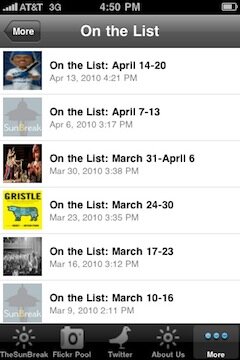
Download the SunBreak iPhone app for free.

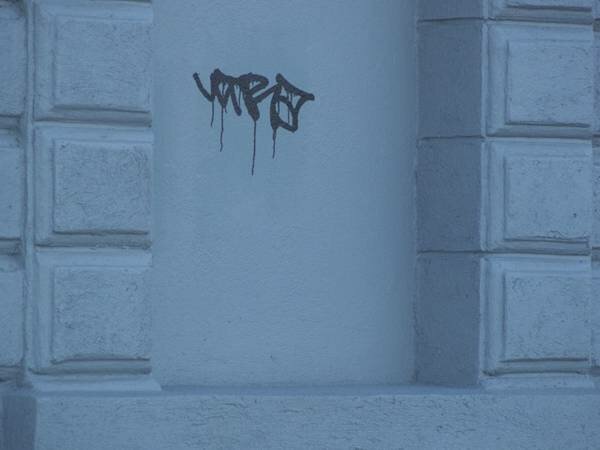
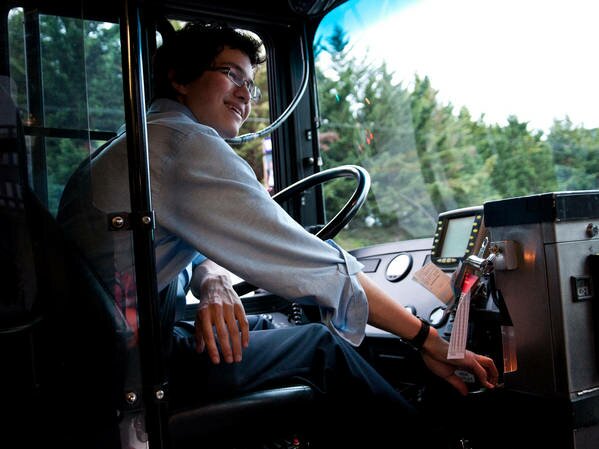


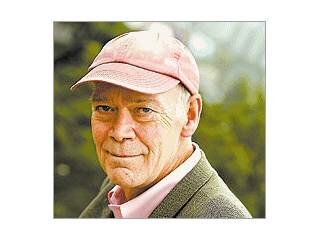

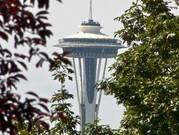
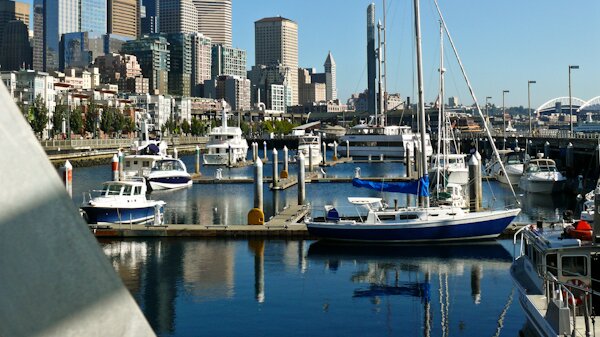
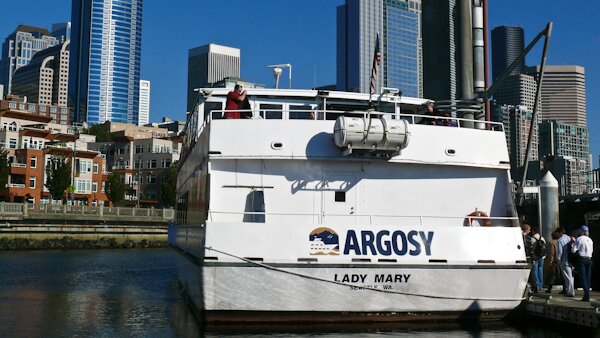


Most Recent Comments